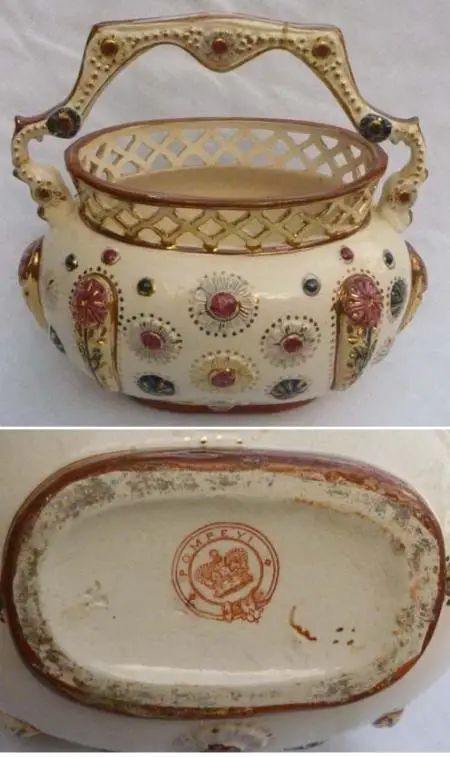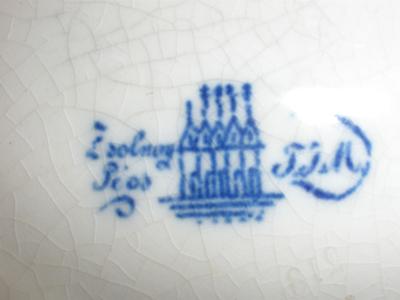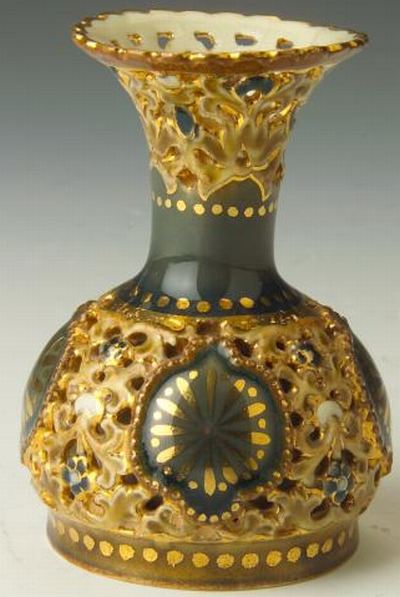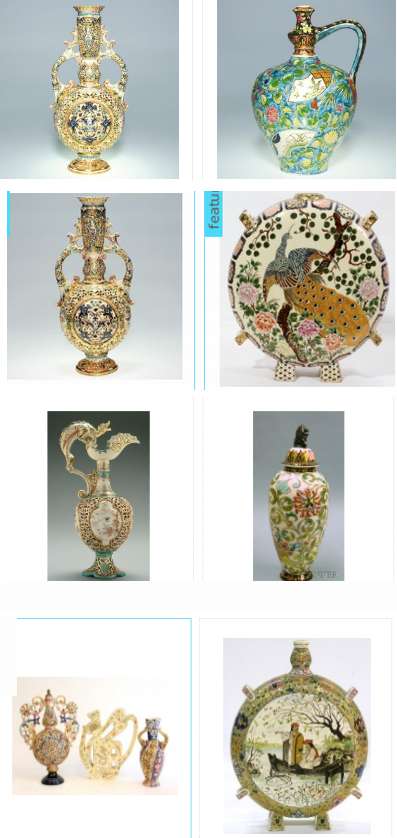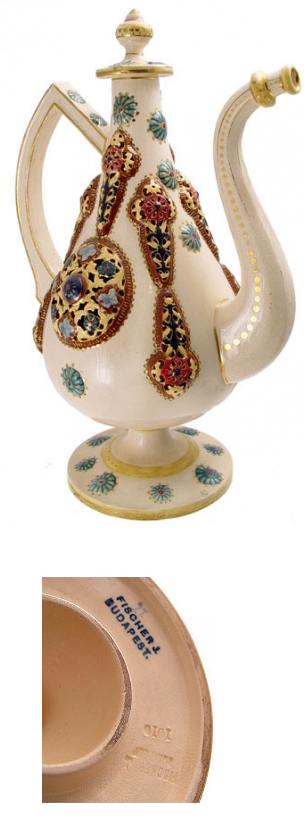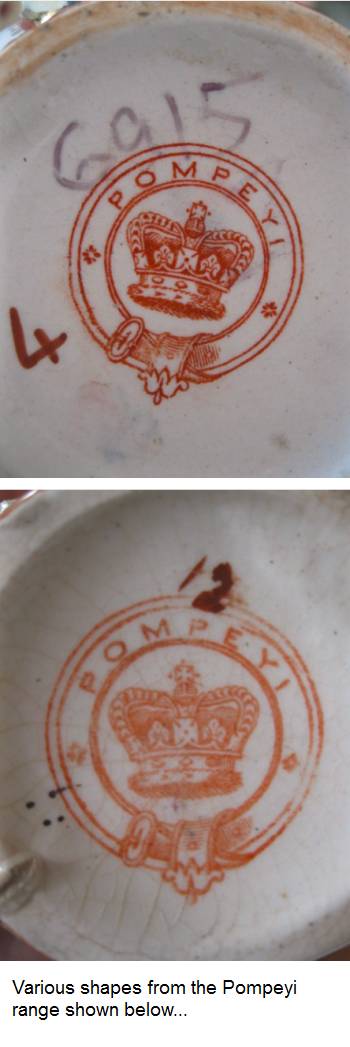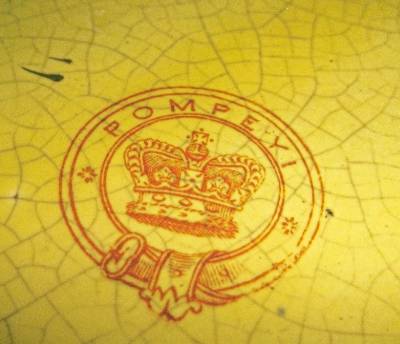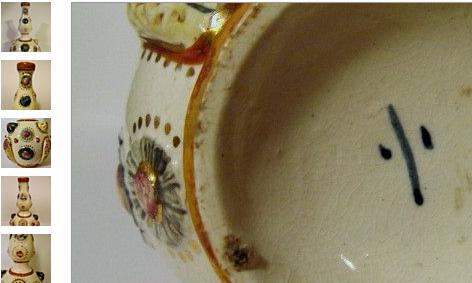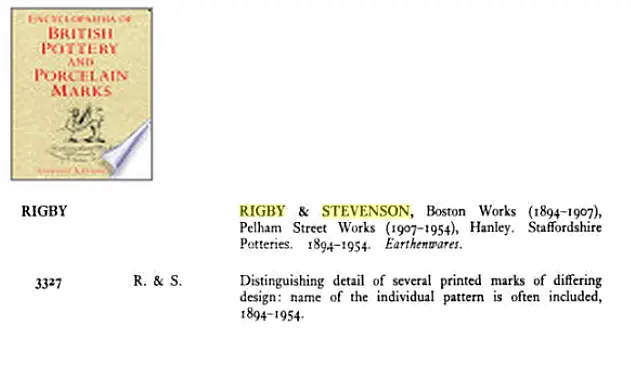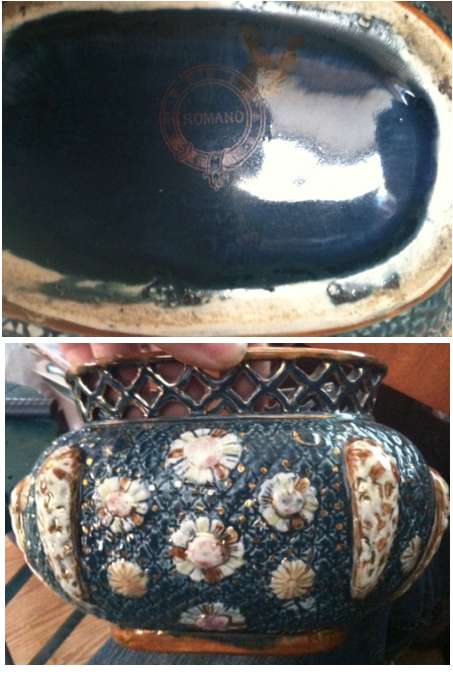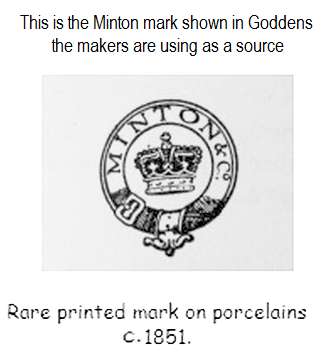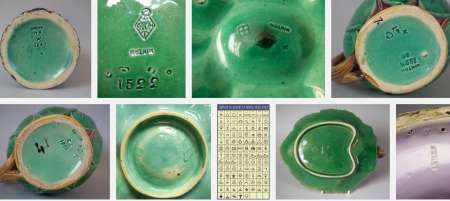Antiques & Fine China Collectibles Query - CROWN MARK AND POMPEYI MARK
by Kathi
(Garner, NC, USA)

Antiques & Fine China Collectibles Query - CROWN MARK AND POMPEYI MARK

Antiques & Fine China Collectibles Query - CROWN MARK AND POMPEYI MARK
Antiques & Fine China Collectibles Query - CROWN MARK AND POMPEYI MARK:- I recently purchased an item described as an ANTIQUE ENGLISH MAJOLICA VASE - POMPEYI DESIGN. I purchased the item aware that it may not be authentic, and I am happy with the piece even if it isn't authentic, but my curiosity has gotten the better of me. The base contains a mark. It is an encircled crown with some kind of flourish at the bottom of the circle and POMPEYI printed at the top. I'm attaching two images, including one of the mark. Can you tell me which manufacturer used this mark?
Thanks.
Kathi
=========================================
Please contribute to this thread by writing in the comments section below – just scroll down...HOW I MADE MONEY FROM BITS & BOBS OF OLD CHINA

.....more
|
Antiques & Fine China Collectibles Query - CROWN MARK AND POMPEYI MARK
Hi Kathy
Many thanks for submitting, and hope you are finding the site useful. Now, as I keep saying, I am not an expert, just a worker in the china industry, but I do have a 'nose', and I like to have fun with antiques and collectibles.
Whatsmore, I am learning more everyday because of interesting queries like this one - which very much gets my 'nose' twitching.
Why is my nose twitching?
Well, I feel like there is a big story behind this one. There are certain things about this piece make me want to look closer. If I were to see this at a garage sale or a thrift store (Charity shop if in the UK), I would snap it up in a second with a view to finding out more about it. I would be quite prepared to take it to an expert and be told: "This is nothing, your imagination is running riot".
However, I would buy it and take the chance, as I think the design is very cool and goes along with today's tastes.
So what intrigues me is the fabulous design for a start. I like bejewelled, I like the reticulated trellis work. I like the hand-made, almost naive or folk art look on the item but what seems a very solid looking, well designed, presented and executed manufacturers stamp.
These two things together are incongruous, and get my attention.
The solo crown mark without initials is the worst possible to identify as so many hundreds of makers used a crown. Most better known makers almost always put initials or some other distinguishing mark to further identify their wares.
This mark does not have any words apart from "Pompeyi", which I feel is a reference to the shape or pattern, or range rather than the maker.
I immediately look up the mark, but can find nothing (solo crown - needle in haystack). Frustrating because it is such a solid classic looking UK Staffordshire
makers garter mark (like the order of the garter on the Royal emblems).
I look it up online and there isn't much around, but see Worthpoint are selling two matching majolica bottles obviously made by the same company in the same period.
The Worthpoint vendor also doesn't know who this is either - just describing them as "...early English majolica... bottles feature little button-like rosettes on the outside and have a handmade feel. They are signed "Pompeyi" on the base with a crown mark."
The plot thickens, I want to know more, my nose is twitching even more now! Hmmmm... "Early English" is obviously more valuable than "Made last week in Taiwan"
I can find nothing else online.
Then, by some accident, my nose brings me to the subject of Pratt Ware or Prattware - a highly specialized collecting area which I know nothing at all about, but by all accounts is quite sought after.
I wanted an easy quick definition of what Prattware was and who Mr Pratt was. The best I found is quoted below but the full article can be read here:-
Old & Sold Article on Pratt Ware"Pratt Ware and Pot Lids
ONE OF THE oldest Staffordshire pottery works was that of Felix Pratt at Fenton, which was in operation continuously from 1775 to 1885...
Of the many different kinds of pottery made by Pratt and his successors {..namely F & R Pratt & Co Ltd of Fenton, Staffordshire...} two types are especially popular with present-day collectors...
The attractive and colorful cream-tinted earthenware jugs and mugs with relief decoration have long been known as Pratt ware, although they were also made elsewhere in Staffordshire, as well as at Leeds, Castleford, and several other potteries. It looks like the finest old Italian majolica apparently.
I then looked at the marks of F & R Pratt as many of the original Felix Pratt wares are unmarked. I did not find your mark, but I found a mark showing a similar crown to the one shown above, but without the knotted belt circle device around it and with the words "F & R Pratt & Co Ltd Fenton Manufacturer to HRH Prince Albert". This mark dated from 1847 - 1860.
So is your item paying homage to a mix of old references?
The answer to the above questions are, I simply don't know, but would love to find out.
Any knowledgeable contributors who feel thay may be able to help with this one please post in the comments section below.
Kathi, many thanks for taking the trouble to upload such an interesting submission and nice photos, and I hope we can get this resolved soonest.
Best regards
Peter (admin)
p.s. The following page is a 'must see' if you are researching fine china - for value and identification:-
Researching the identity and value of antique and vintage fine china.






